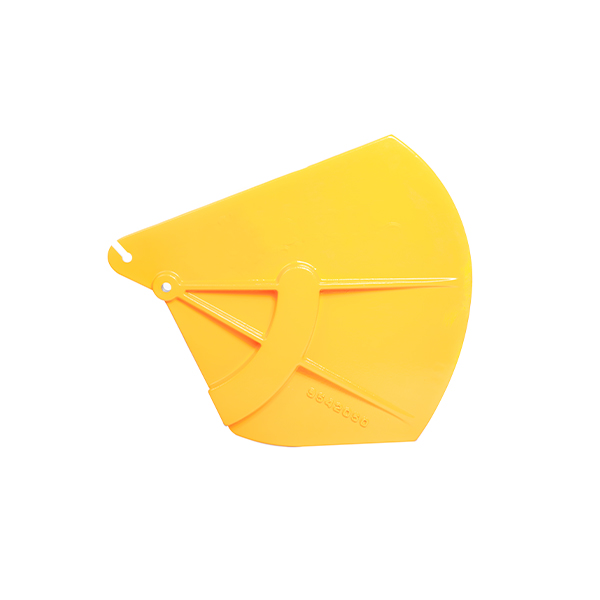Mobile:+86-311-808-126-83
Email:info@ydcastings.com
6-inch pipe cap specifications and applications for plumbing and construction projects.
Understanding 6-Inch Pipe Caps A Comprehensive Guide
When it comes to piping systems, ensuring secure and effective connections is essential, and one of the critical components in these systems is the pipe cap. Particularly, 6-inch pipe caps serve various industrial, commercial, and residential applications. In this article, we will explore the significance of 6-inch pipe caps, their materials, applications, and installation practices.
What is a Pipe Cap?
A pipe cap is a type of fitting designed to cover the end of a pipe, effectively sealing it off. This prevents the flow of liquids or gases, protecting the internal structure of the pipe and maintaining pressure within the system. Caps are essential for preventing contaminants from entering the pipeline, and they can also be used to close the lines temporarily during maintenance.
Significance of 6-Inch Pipe Caps
The 6-inch designation refers to the diameter of the pipe being capped. This specific size is commonly used in various applications, including water supply lines, sewage systems, and HVAC (heating, ventilation, and air conditioning) installations. The choice of a 6-inch pipe cap often depends on the requirements of the project, including flow rate, pressure, and the nature of the materials being transported.
One of the key reasons for using pipe caps is to ensure the integrity of the piping system. Cap fittings provide a reliable seal, minimizing the risk of leakage, which can lead to significant issues, including environmental contamination and increased operational costs.
Materials Used in 6-Inch Pipe Caps
Pipe caps are manufactured from a variety of materials to suit different applications. The most common materials include
1. PVC (Polyvinyl Chloride) PVC caps are durable, lightweight, and resistant to chemical corrosion, making them suitable for water and drainage systems. They are also easy to install and cost-effective.
2. CPVC (Chlorinated Polyvinyl Chloride) Similar to PVC, CPVC is used in applications that require handling hot water or other heated liquids. CPVC caps are resistant to high temperatures and maintain their structural integrity under pressure.
3. Steel (Carbon Steel, Stainless Steel) Steel caps are robust and are often used in industrial applications. Carbon steel caps are commonly used in high-pressure systems, while stainless steel caps offer enhanced resistance to rust and corrosion, making them ideal for marine or chemical applications.
4. Copper Copper caps are traditionally used in plumbing applications due to their anti-corrosive properties. They are particularly effective in residential settings, where they can effectively seal off sections of copper piping.
Applications of 6-Inch Pipe Caps
6 inch pipe cap

6-inch pipe caps are widely used across various industries. Some key applications include
- Water Distribution Systems In municipal water supply networks, caps are used to temporarily or permanently seal off sections of pipe during repairs or inspections.
- Sewage Systems Pipe caps are essential in sewage systems to close off end lines or divert waste flows during maintenance.
- HVAC Systems In HVAC installations, sealing ducts with caps ensures proper pressure and airflow, crucial for maintaining temperature regulation.
- Industrial Processes In manufacturing and processing facilities, pipe caps are often used to contain liquids and gasses safely, preventing leaks and ensuring worker safety.
Installation Practices
Installing a 6-inch pipe cap is generally a straightforward process, but it’s essential to follow best practices to ensure a secure fit. Here are some key steps
1. Preparation Ensure that the end of the pipe is clean and free from any debris or obstructions. This step is critical for achieving a tight seal.
2. Choosing the Right Cap Select the appropriate cap material based on your application, considering factors such as temperature, pressure, and the type of fluid.
3. Utilizing Proper Tools Depending on the material of the cap, appropriate tools (like wrenches for metal caps or PVC cement for plastic caps) should be used to secure the cap to the pipe.
4. Ensuring Tightness Once the cap is in place, check for tightness. In case of threaded caps, ensure that they are snug but avoid over-tightening, which can cause damage.
5. Testing for Leaks After installation, it is crucial to conduct a pressure test to check for leaks. This ensures that the seal is as effective as intended.
Conclusion
In summary, 6-inch pipe caps are an essential component in many piping systems across various applications. Understanding their materials, uses, and installation practices can significantly enhance the efficiency and safety of any piping project. Whether for residential plumbing or complex industrial systems, the reliability provided by a properly fitted pipe cap is indispensable.
-
Why Should You Invest in Superior Pump Castings for Your Equipment?NewsJun.09,2025
-
Unlock Performance Potential with Stainless Impellers and Aluminum End CapsNewsJun.09,2025
-
Revolutionize Your Machinery with Superior Cast Iron and Aluminum ComponentsNewsJun.09,2025
-
Revolutionize Fluid Dynamics with Premium Pump ComponentsNewsJun.09,2025
-
Optimizing Industrial Systems with Essential Valve ComponentsNewsJun.09,2025
-
Elevate Grid Efficiency with High-Precision Power CastingsNewsJun.09,2025











